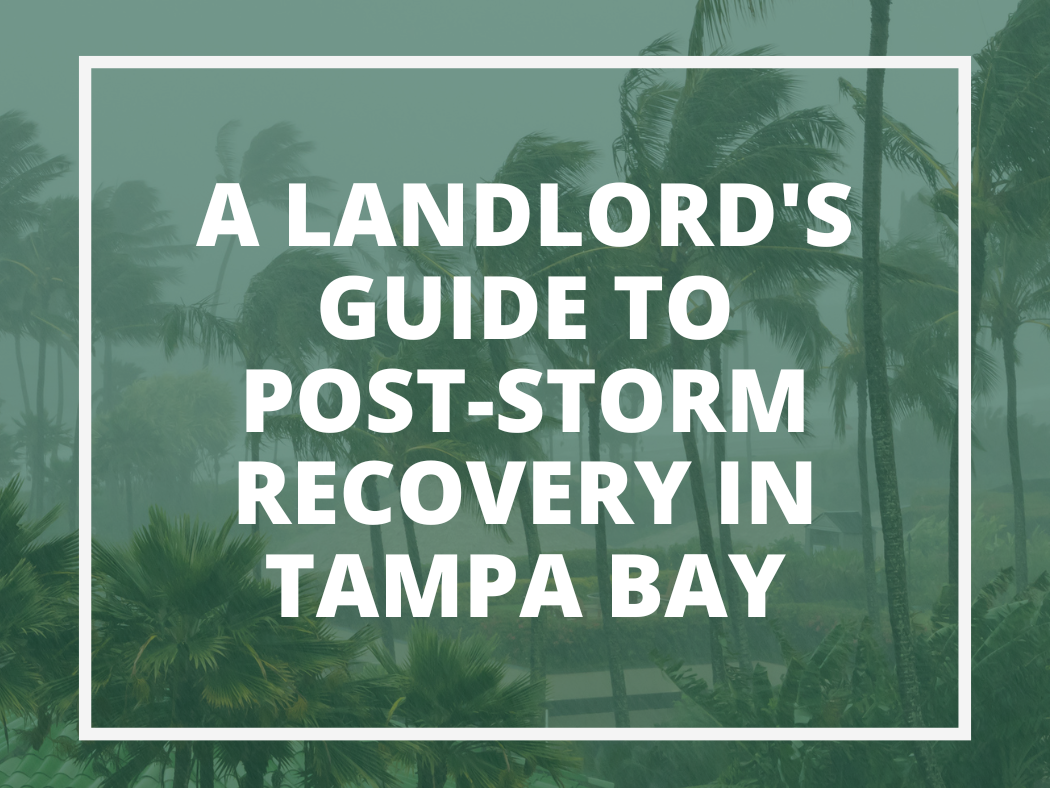Tampa Bay is a region that offers exceptional opportunities for real estate investors. From high-rise condos in downtown Tampa's waterfront district to single-family properties in growing Pasco County, this dynamic market attracts investors seeking lucrative returns. As an experienced Tampa Bay property manager, we understand the importance of making smart investment decisions and protecting your assets, especially during hurricane season.
In this comprehensive guide, we will provide valuable insights and practical tips to help landlords navigate the storm recovery process in Tampa Bay. From pre-storm preparations to post-storm safety assessments, we will cover essential steps to ensure the well-being of your tenants and the resiliency of your investment properties. Additionally, we will delve into the concept of “building back better” and share strategies to enhance the long-term value of your properties.
Understanding the Risks of Hurricane Season in Tampa Bay
Tampa Bay's geographical location exposes it to the potential impact of hurricanes and tropical storms. These weather events can cause severe damage to properties and disrupt the lives of residents and tenants. As a responsible landlord, it is crucial to understand the risks associated with hurricane season and take proactive measures to mitigate them.
Stay informed: Keep track of weather updates and stay tuned to official announcements and evacuation orders from local authorities. Reliable sources like the National Hurricane Center provide essential information during hurricane season.
Review insurance coverage: Regularly assess your insurance policies to ensure they provide adequate coverage for potential storm-related damages. Consider additional coverage options that protect against specific risks common in the Tampa Bay area.
Develop an emergency plan: Create a comprehensive emergency plan that includes evacuation routes, emergency contacts, and procedures for securing your properties before a storm. Share this plan with your tenants and ensure they are aware of safety protocols.
Preparing for the Storm: Safeguarding Your Investment Properties
Before a storm approaches, it is crucial to take proactive steps to protect your investment properties and ensure the safety of your tenants. Keep an open line of communication with your tenants before, during, and after a storm. Provide them with important safety information and emergency contact details, and encourage them to report any damages or concerns promptly.
You should also regularly inspect your properties to identify any existing vulnerabilities that may worsen during a storm. Address maintenance and repair needs promptly to mitigate potential risks. Look for things like:
Roofing Issues: Existing problems with roofing materials, such as loose or missing shingles, can worsen during a hurricane. High winds can exploit these weaknesses and tear off sections of the roof, leading to extensive water damage inside the home.
Poor Drainage: If a home's gutters are clogged or the property slopes towards the home, heavy rains can result in water pooling around the foundation, leading to leaks, flooding, and potentially severe structural damage.
Unsecured Doors and Windows: Doors and windows that are not well-secured may break or blow out under the pressure of hurricane winds, allowing rain and debris to enter the home.
Large Trees and Limbs: Trees or large branches that hang over the home can pose a significant risk. If a hurricane causes these to break, they can fall on the home, potentially causing significant damage to the roof or walls.
Damaged Siding or Exterior Walls: Any pre-existing damage to the home's siding or exterior walls can become an entry point for wind and water during a hurricane. This can lead to interior damage and potentially compromise the home's structural integrity.
Improperly Sealed Openings: If openings around doors, windows, or where utilities enter the home are not properly sealed, they can allow water to infiltrate the home during a hurricane.
Unsecured Outdoor Items: Outdoor items such as furniture, grills, and potted plants can become dangerous projectiles during a hurricane if not properly secured.
Old or Damaged Garage Doors: Garage doors are typically one of the most vulnerable parts of a home during a hurricane. If the garage door is old, damaged, or not wind-rated, it may fail under the pressure of hurricane-force winds, leading to wind damage inside the home.
Faulty or Aged Electrical Systems: Water intrusion from a hurricane can be especially dangerous if the home's electrical system is outdated or not up to code, potentially leading to electrical fires.
Post-Storm Recovery: Ensuring Tenant Safety and Property Restoration
Once the storm has passed, your priority should be the safety and well-being of your tenants. Additionally, prompt action is necessary to assess damages and initiate the recovery process. Follow these steps to ensure a smooth post-storm recovery:
Assess property damages: Conduct a thorough inspection of your properties, documenting all damages with photographs and written reports. Prioritize repairs based on the severity of the damages.
Ensure tenant safety: Inspect the property's structural integrity, electrical systems, and water supply. Address any immediate safety hazards and communicate updates to your tenants.
Engage professionals: Work with reputable contractors and restoration specialists to handle repairs and restoration. Seek recommendations from trusted sources and request multiple quotes to ensure fair pricing.
Building Back Better: Increasing Buliding Resiliency
Building back better involves not only restoring your properties to their pre-storm condition but also taking the opportunity to improve their resiliency and long-term value. Consider the following strategies:
Implement resilient design features: Incorporate hurricane-resistant materials, such as impact windows, reinforced roofing, and stormwater management systems. These upgrades enhance property durability and reduce future storm-related damages.
Improve drainage systems: Ensure proper water management by maintaining functional gutters, downspouts, and drainage systems. Implement landscaping techniques that facilitate water runoff and prevent flooding.
Update emergency plans: Review and update your emergency preparedness plans based on lessons learned from the recent storm. Share updated plans with tenants and conduct periodic drills to familiarize everyone with safety procedures.
Navigating hurricane season in Tampa Bay requires proactive planning, effective communication, and a commitment to building back better. By preparing for the storm, safeguarding your investment properties, and prioritizing tenant safety during the post-storm recovery, you can mitigate potential damages and ensure the value of your real estate investment portfolio. Own properties and don’t want to handle these things alone? Contact us for help!


